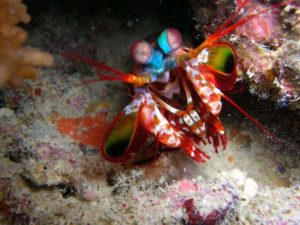 “When is the best time to dive in Fiji” people always ask this question. The best answer is, it all depends on what you want to see and what you personally are interested in when diving. If you rather dive in very warm water then summer would be your choice, if you want to dive in the best visibility, then the cold season is better.
“When is the best time to dive in Fiji” people always ask this question. The best answer is, it all depends on what you want to see and what you personally are interested in when diving. If you rather dive in very warm water then summer would be your choice, if you want to dive in the best visibility, then the cold season is better.
Is there a best time to dive in Fiji?
I personally don’t think there is such a thing as the best time to dive…
There are seasonal and natural cycles in the ocean that affect sea life just as the seasons affect life in a forest. Those seasonal changes and different environmental conditions trigger an annual appearance of different sea life to be observed in the ocean often not to be found in other seasons.
So nature holds every season special with different highlights such as; Humpback whale migration, coral spawning, or turtle breeding season. The best time to dive in Fiji depends on you as a scuba diver and what you want to see.
Diving Seasons in Fiji
In Fiji, we have two seasons. A warm season, which is our Summer from November until April, and a cold season our Winter from May till October.
In summer, the ocean warms up and reaches its maximum water temperature in late March at around 28 ° C 83 ° F. Shallow lagoons and coastal waters may even be a little warmer. This season is the best time to dive if you get cold very easily. The high temperature increases plankton and algae growth, this in effect reduces underwater visibility.
However, the warm water spawns life, and it’s the season for very good diving in search of little critters such as nudibranchs, flatworms, shrimps, ghost pipefish…
In winter, the water temperature drops to 23 ° C / 72 ° F, which reduces plankton and algae activity. The open ocean then has a deep blue color and often one can enjoy spectacular visibility of 50 m / 150 feet while scuba diving.
Winter is the best time to dive if you love diving in spectacular visibility. The cold season is also good for big fish encounters. Especially toward the end of the season as some fish species begin to congregate in large numbers in preparation for reproduction.
 Diving in Summer from November until April
Diving in Summer from November until April
NOVEMBER DIVING
in November the water temperatures are beginning to rise notably. The continuous winter trade winds have dropped and there are often long calm spells with flat seas.
With the increase in temperature comes the time for reproduction for many creatures. Coral spawning occurs as well as the sea worm Balolo (Eunice viridis) spawns 8 days after the November full moon. The reef is full of crustaceans and there is an abundance of Spanish mackerel. Sea turtles come to the beaches to lay their eggs, btw. they come back to the beaches where they hatched themselves from the egg decades ago.
DECEMBER DIVING
Summer with warm, humid weather is here, the ocean is bursting with new life after the seasonal spawning events. Many reef fish reproduce, with large schools of surgeonfish, crustaceans such as spiny rock lobster (Panulirus ornatus), and crabs bearing eggs.
The Titan triggerfish builds its nest in the sand and furiously guards it. As a diver you have to be careful not to move into ist territory which extends vertically in a conical shape, otherwise, you have to reckon with attacks.
JANUARY DIVING
Very warm and humid days are cooled by short heavy rain squalls and thunderstorms in the afternoon or evening. The water is 28 ° C and diving is very pleasant.
Reef fish are still reproducing, Little spine foot and other rabbitfish species are abundant and ready to spawn. Salps, jellyfish, and other strange pelagic siphonophores drift with the currents. Tuna aggregations migrate through Fiji’s open seas.
FEBRUARY DIVING
The warmest month and statistically the wettest month in Fiji. When it cools off in the afternoons or nights, rain comes in heavy short tropical downpours.
Damsels, wrasse, surgeons, and parrotfish are still spawning on the reef. Plenty of Trevally hunting in the passages and along the reef edges. Turtles hatch around February.
MARCH DIVING
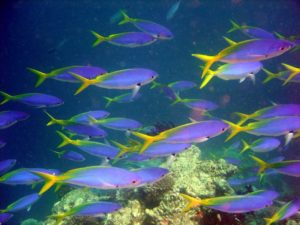 The water temperature is highest now, and the days are still hot and humid.
The water temperature is highest now, and the days are still hot and humid.
Large schools of sardines are around. Lots of Whitebait is around, juvenile fish are starting to appear on the Reef and in lagoons.
APRIL DIVING
The water temperature starts to drop in April. So does air temperatures and evenings can be a little cool already. The clear, blue waters are teeming with new life and it’s a great time of year to go diving.
Plenty of bigeye scad shows up on the reefs.
Diving in Winter from May till October
MAY DIVING
In may the water is really starting to cool down, and winter is coming fast. The Trade winds are starting to pick up in intensity, sometimes blowing at 25 knots for weeks. Seas can be rough during the winter months and boat trips are bumpy. Visibility increases as fewer plankton and algae grow in the water. It has more Wahoo, Mahimahi, and other big game fish to see.
May is the month of the chub mackerel.
JUNE DIVING
Water temperatures have dropped to around 23 degrees Celsius, thicker wetsuits are a must to be comfortable. But it is an exciting month for diving as the cold water of winter increases big fish action.
See also large schools of silver biddy, big mouth mackerel, and gold spot herring. Most of all, this is also the beginning of the humpback whale season.
JULY DIVING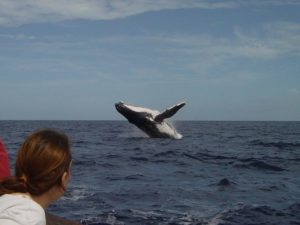
In July the waters outside the reefs are a deep, clear blue. The mornings are crisp and cool and the water temperature may be a low of 22 degrees Celsius (71 degrees Fahrenheit). Statistically, there is not so much rain anymore. But still, sometimes the sky can be gray and drizzly rain may hang in the air for extended periods. It can be windy as the trade winds may blow continuously and strong at this time of year making boating uncomfortable. Visibility underwater is usually excellent.
Octopus season begins, rock cod and all sorts of grouper-like fish start congregating, for the upcoming spawning. Plenty of Mullet is around. More manta rays can be seen. Humpback whale sightings increase.
AUGUST DIVING
This month is the peak month of Humpback whale sightings. Even diving on the reef you may sometimes hear their singing underwater. It’s a great bonus during diving trips to encounter whales and spend time watching their breaching and surface behavior.
The cold water in August makes for great diving. The water is very clear water and there are lots of sightings of big fish. There are still lots of octopus, grouper, and snapper to be seen on the reefs. Schools of mullet and little priest (Thryssa baelama) are common.
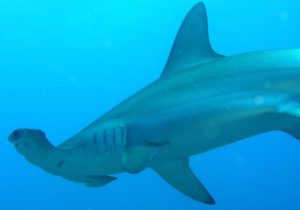 SEPTEMBER DIVING
SEPTEMBER DIVING
September has often excellent visibility because the water is still quite cold. The trade winds are in general not that strong anymore and diving conditions are good.
It’s great for big fish encounters, there are all sorts of groupers and rock cod, snappers, and emperor on the reefs spawning in September.
OCTOBER DIVING
The summer is coming back and the ocean is warming up again. Strong winter trade winds have dropped as a result the seas are becoming calmer again. Diving conditions are good.
Nature prepares for a new cycle of life as this season means reproduction for many species. Turtle sightings increase as they come closer to land in preparations for the mating and nesting season.
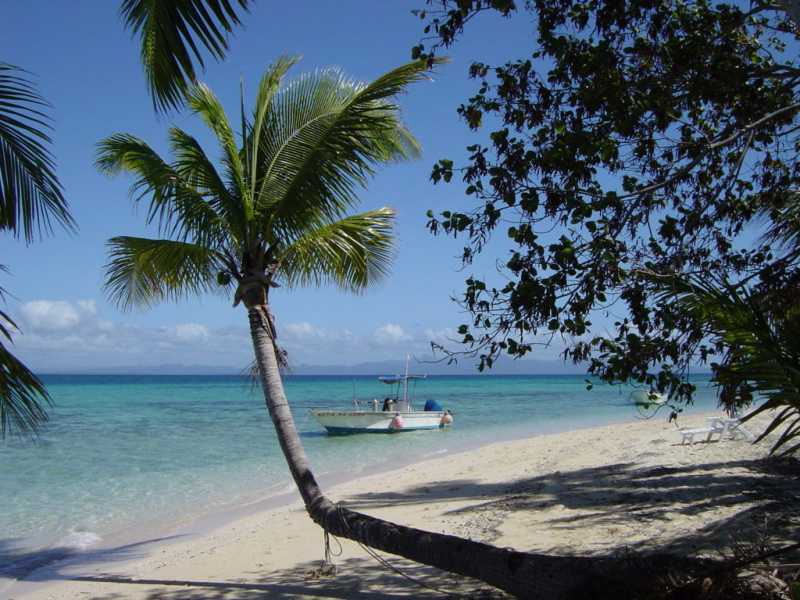
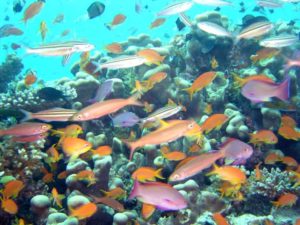 Diving in Summer from November until April
Diving in Summer from November until April

